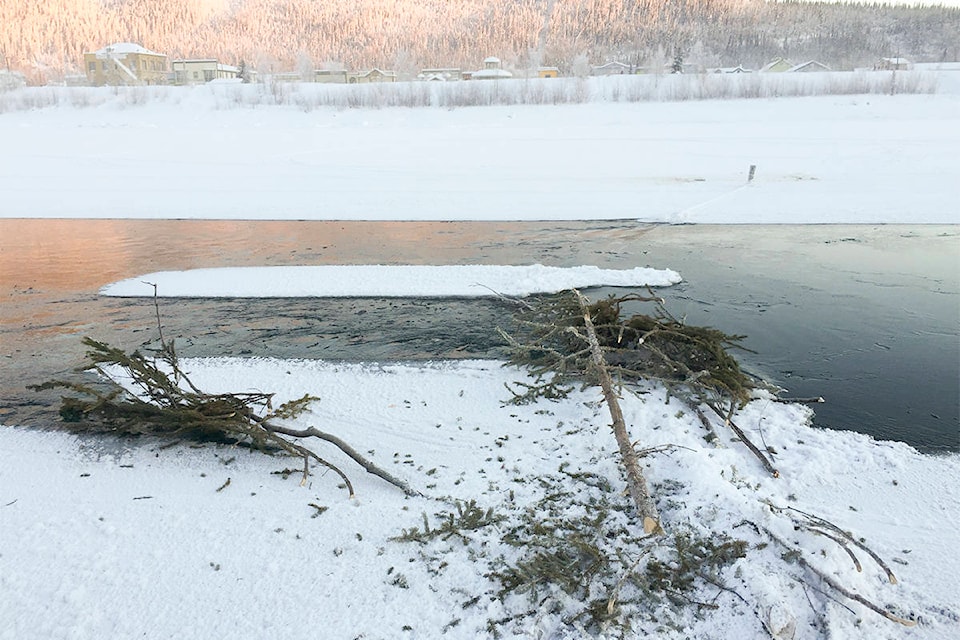The Yukon government is considering using an ice boom to ensure that an ice bridge forms between Dawson City and West Dawson this year, according to a report by the National Research Council (NCR) released last week.
Titled The Yukon River at Dawson City: Assessment of factors influencing freeze-up and ice bridge construction, the 63-page technical report takes a preliminary look into factors that may have contributed to why the Yukon River hasn’t frozen at the George Black ferry crossing for the past two winters. It also suggests possible remedies and further research that should be done.
The ice bridge, which the territory has been responsible for since the 1960s, is the only official and sanctioned means for West Dawson’s roughly 100 residents to access Dawson during the winter months.
The Yukon government “invited” the NCR to look into the issue in May, the report says, after a failed attempt to get the bridge to freeze over in January using a machine that sprayed water into the air over the open gap in the river. The idea, which was ultimately unsuccessful and abandoned after about a week, was that the water would freeze while in the air and the ice would settle on the surface of the river.
The work cost $125,000. West Dawson residents eventually created their own unsanctioned ice bridge.
The report lists five factors as among the reasons why that attempt to get the bridge to freeze failed, including the fact that the contract for the work was set up in December, which was “relatively late” and gave the consultants “little time to plan” and that the work began when it was -15C to -20C out, but, two days later, Dawson was hit with a warm spell and rain.
“An ice boom adapted for that purpose could have been used to retain spray ice that settled on the water surface, but was not — it is conceivable that a good portion of the spray ice that settled on the water was carried away by the river current,” the report suggests.
For the upcoming winter, the report suggests that the Yukon government could use an ice boom — typically, “a floating line of cable and pontoons at regular intervals that spans the river in order to accumulate ice on the upstream side” that can be deployed four different ways — to ensure the ice bridge forms.
It also suggests that the territorial government run a line across the river channel, which could be used for the boom or to run a ground-penetrating radar unit to measure ice thickness; using the spray method again if conditions are ideal; and further investigations into the impacts, if any, the sand bar at the Klondike River junction and the effluent from the wastewater treatment plant are having on freeze-up.
According to the report, the Yukon government is considering installing an ice boom, and is expected to issue a tender for the work, which would include supplying and installing the boom, constructing the ice bridge, traffic control and environmental compliance sometime this month. The tender would close in November, with construction starting either the same month or in December.
The Yukon government was scheduled to hold a meeting in Dawson the night of Oct. 9 to present details of its plan.
Contact Jackie Hong at jackie.hong@yukon-news.com
